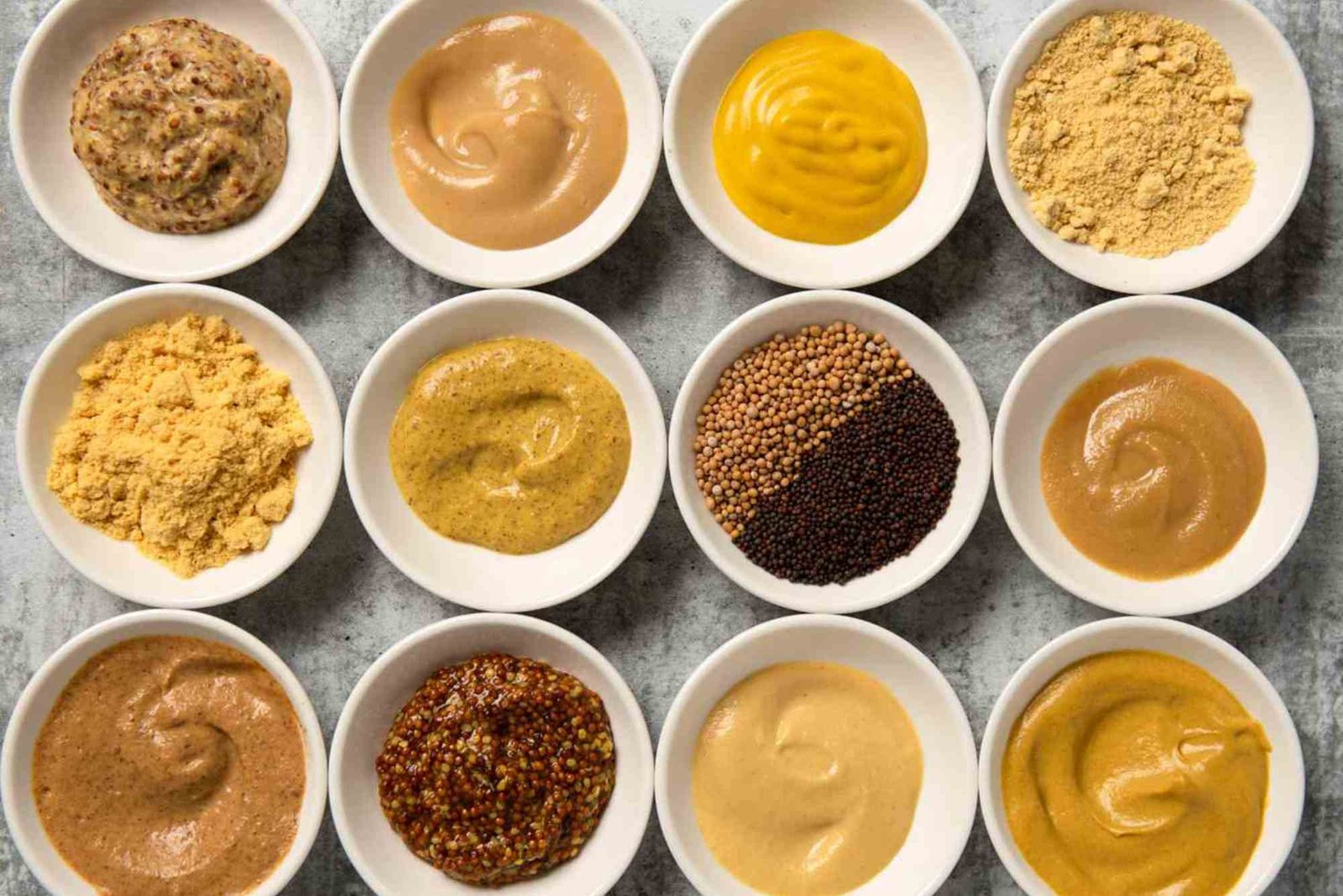Understanding how mustard is made and where it comes from reveals the fascinating journey behind one of the world’s oldest and most beloved condiments. This staple ingredient appears in home kitchens, Michelin-star restaurants, and even in wellness circles. The process blends ancient agricultural tradition with modern food science, resulting in a product that ranges from sharp and spicy to creamy and mild. Because mustard is simple yet diverse, its production story highlights human ingenuity and culinary evolution.
This guide explains how mustard is made and where it comes from, from the growing fields to the glass jar on your table. The focus keyword also aligns with consumer curiosity and modern search behavior, helping readers learn while meeting SEO requirements.
Introduction to Mustard’s Origin and Cultural Roots
Mustard originates thousands of years ago, with early cultivation traced to ancient civilizations. Evidence from China, Egypt, and the Indus Valley shows mustard seeds used for food, oil, and medicine. Greek and Roman texts describe mustard preparations remarkably similar to modern versions. Over centuries, mustard spreads across Europe, then to North America, influenced by explorers, traders, and agricultural expansion.
Because mustard plants are hardy and adaptable, they thrive in varied climates, accelerating global cultivation. Today, Canada, Nepal, India, the United States, and Russia rank among top producers. Each region contributes unique seed varieties and flavor traditions, shaping the condiment’s global identity. By understanding how mustard is made and where it comes from, consumers gain appreciation for a product that connects ancient food culture to modern dining trends.
Mustard Plants and Seed Varieties
Three primary mustard seed types form the base of nearly all mustard products. Yellow or white mustard seeds produce mild, slightly tangy condiments familiar to many American households. Brown mustard seeds create stronger, hotter flavors popular in European traditions and craft recipes. Black mustard seeds deliver intense heat and appear in South Asian cuisine and specialty blends. Each seed variety carries unique flavor compounds, oil content, and heat potential, influencing both processing and final taste.
Beyond the seeds, mustard greens and mustard oil represent additional plant uses. Leaves become salad greens or cooked vegetables, especially in Asian and African cuisines. Oil extraction produces pungent, nutrient-rich cooking oil and a traditional remedy in some cultures. These layers of use demonstrate mustard’s agricultural value.
Farming and Harvesting Mustard Seeds
Cultivation begins with seed planting in cool months, as mustard thrives in moderate climates and well-drained soil. Farmers monitor growth closely, ensuring weed control and soil health. Flowering creates bright yellow fields that signal healthy plant development. When seed pods dry and harden, harvesting begins. Farmers employ modern machinery to cut plants, extract pods, and separate seeds. Post-harvest drying prevents spoilage and preserves flavor.
Sustainable farming practices remain central to production. Mustard plants benefit crop rotation systems and support soil health. In many regions, mustard serves as a cover crop, preventing erosion and promoting biodiversity. Because mustard needs limited irrigation compared to other commercial crops, its environmental footprint often remains favorable.
How Mustard Is Made: Processing and Production
Turning seeds into mustard involves controlled grinding, mixing, and maturation. Manufacturers begin by cleaning and sorting seeds to remove debris. Grinding breaks seeds into coarse or fine powder depending on product style. The chemical reaction that creates mustard’s heat occurs when ground seeds contact liquid. Water activates compounds called glucosinolates, releasing pungency. Producers add water, vinegar, wine, beer, lemon juice, or other liquids to achieve desired flavor.
Temperature and acidity influence heat strength. Cold water preserves heat, while warm temperatures reduce it. Acid stabilizes mustard by slowing heat development over time and extending shelf life. Consumers often associate Dijon mustard with wine-based liquids, while American yellow mustard typically uses vinegar and turmeric for bright color. After blending ingredients, mustard rests to mature. This resting period refines texture and flavor before packaging.
Traditional Mustard-Making Techniques
Historical methods relied on stone grinding and hand mixing. Many artisanal producers still follow similar practices. Seeds soak to soften before grinding. Liquid additions occur slowly to maintain consistency. Traditional methods involve minimal mechanical intervention, preserving seed texture and natural oils. Because such processes take time, finished mustard often develops deeper complexity. European craft mustard, French Dijon, and English whole-grain mustard are notable examples of old-world craftsmanship influencing today’s marketplace.
Industrial Mustard Production
Modern factories blend automation, precision grinding, and food-safe processing. Stainless steel equipment maintains hygiene. Industrial mills create uniform particle size for smooth mustards. Quality control labs monitor pH, viscosity, and microbial safety. Pasteurization may occur depending on product category. Efficient packaging lines fill jars, squeeze bottles, and food-service containers. Industrial scaling ensures consistent flavor and massive global distribution.
Although technology streamlines production, core principles remain identical to ancient techniques. Grinding seeds and activating enzymes defines mustard’s identity. Manufacturers enhance production through advanced machinery without altering fundamental science.
Different Mustard Types Around the World
Regional preferences shape mustard variety. American yellow mustard offers mild, balanced tang, often paired with grilled foods and sandwiches. Dijon mustard provides sharper, wine-based depth, making it a favorite in sauces and gourmet applications. English mustard is intensely hot and finely ground, valued for its fiery kick. German and Bavarian mustards often lean sweeter or grainier, complementing meats and pretzels. South Asian mustard pastes and oils deliver powerful spice and cooking richness. Chinese mustard powder, when hydrated, becomes extremely hot and used as dipping sauce or seasoning. Diversity proves that how mustard is made and where it comes from influences every flavor note.
Nutritional Value and Culinary Uses
Mustard delivers flavor with minimal calories, making it a healthier condiment choice. Seeds contain minerals like selenium and magnesium, along with beneficial plant compounds. Mustard’s versatility spans marinades, dressings, spreads, glazes, pickling, rubs, and sauces. Home cooks and chefs achieve depth with minimal effort, using mustard as an emulsifier and flavor enhancer. This adaptability keeps mustard relevant in modern cuisines, including vegan and wellness-focused eating trends. Even fitness-oriented meal plans, including regimens like those popular in Orange Theory Mountain View communities, appreciate mustard’s low-calorie, bold-flavor profile.
The Importance of Fermentation and Aging
Aging mustard allows flavors to balance. Time softens harshness and enhances complexity. Some premium brands age mustard in barrels or temperature-controlled rooms. Fermentation may occur naturally in select recipes, developing subtle sour notes. While not all mustard ferments, controlled aging supports chemical stabilization and flavor maturity.
Storage, Shelf Life, and Quality
Proper storage extends freshness. Refrigeration after opening preserves aroma, heat, and acidity balance. Factory-sealed mustard stored in a cool environment remains shelf-stable for long periods due to acidity and natural preservatives. Consumers should avoid exposure to heat and light, which may degrade flavor.
Why Mustard Remains Globally Popular
Mustard’s historical roots and modern adaptability contribute to sustained popularity. It suits traditional dishes and contemporary health-driven meals. Low sugar content appeals to nutrition-conscious consumers. Culinary professionals value its emulsifying properties and ability to elevate sauces. As food culture continues to evolve, mustard remains a flexible, timeless pantry essential. Understanding how mustard is made and where it comes from enriches appreciation and supports informed purchasing choices.
Frequently Asked Questions
What plant does mustard come from?
Mustard comes from the mustard plant, part of the Brassicaceae family, which includes cabbage, broccoli, and radish. Seeds from white, brown, or black mustard plants form the base of most mustard condiments.
How is mustard actually made?
Mustard is made by grinding mustard seeds and activating flavor compounds with water or acidic liquid. Blending, resting, and packaging complete the process. Temperature and acidity determine heat level.
Is mustard fermented?
Most mustard is not fermented, but some traditional and specialty recipes may allow natural fermentation or controlled aging to enhance flavor.
Where did mustard originally come from?
Mustard originated in ancient civilizations including China, Egypt, and India, later spreading to Europe and eventually the rest of the world.
What is the difference between yellow and Dijon mustard?
Yellow mustard uses vinegar and turmeric for a mild, bright flavor. Dijon mustard typically uses wine or grape juice, creating a sharper and more refined taste.
The journey of mustard from seed to condiment blends agriculture, culinary science, and cultural history. Understanding how mustard is made and where it comes from deepens appreciation for a timeless product used in home kitchens, street food, and gourmet cuisine worldwide. From ancient civilizations to modern production lines, mustard remains a versatile, flavorful essential. Explore additional food insights and expand your culinary knowledge. For more information on food-related topics, visit the internal resource about How Mustard Is Made and Where It Comes From at. Discover a Related Food article at . To stay informed on global services and delivery updates, Learn more at .












